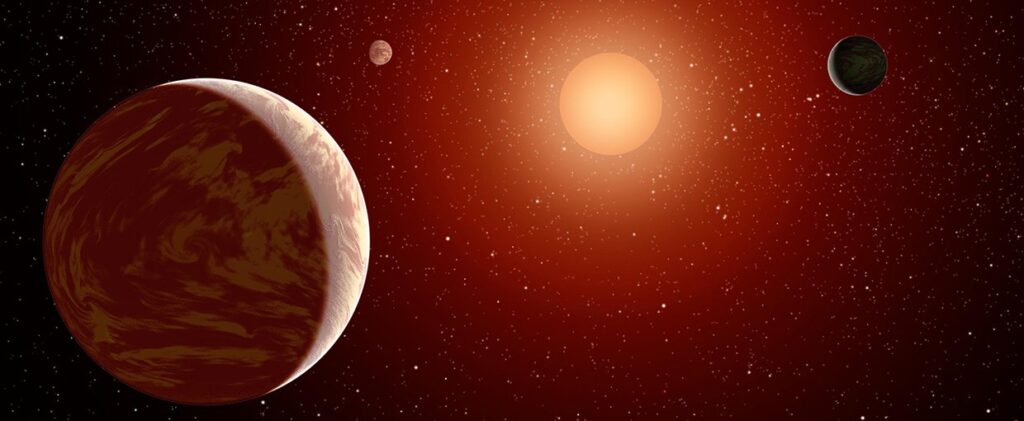Astronomers have recently uncovered surprising risks to the habitability of planets orbiting red dwarf stars, shedding new light on the complexities of space environments. This groundbreaking discovery, led by researchers from the University of Hawai’i and the University of Cambridge, reveals that red dwarf stars can produce stellar flares with far-ultraviolet (far-UV) radiation levels much higher than previously believed.
Red dwarf stars, the most common type of star in our galaxy, have long been considered potential hosts for habitable planets due to their longevity and abundance. However, the recent findings challenge this assumption by showing that these stars can emit far more intense UV radiation during stellar flares than previously thought. This revelation came from analyzing archival data from the GALEX space telescope, which observed the sky in near-and far-UV wavelengths from 2003 to 2013. The research team, led by Vera Berger, used modern computational techniques to mine insights from this data, examining flares among 300,000 nearby stars

The intense UV radiation from these stellar flares has profound implications for the habitability of planets orbiting red dwarf stars. On one hand, this radiation can erode planetary atmospheres, stripping them of essential elements and rendering them inhospitable. On the other hand, it can also contribute to the formation of RNA building blocks This dual role of UV radiation highlights the delicate balance required for a planet to support life. The study shows that far-UV emissions from flares are on average three times more energetic than typically assumed, and can reach up to twelve times the expected energy levels.
To arrive at these findings, the researchers combined modern computer power with gigabytes of decades-old observations from the GALEX space telescope. This innovative approach allowed them to search for flares on thousands of nearby stars, significantly expanding our understanding of stellar activity. Michael Tucker, a co-author from Ohio State University, emphasized the importance of this method in uncovering new insights from existing data.
The study’s results challenge existing models of stellar flares and exoplanet habitability, suggesting that many more stars than previously believed could generate enough UV radiation to impact planetary environments. According to Jason Hinkle, a co-author of the study, this research has fundamentally changed our picture of the environments around stars less massive than our Sun, which emit very little UV light outside of flares.



















